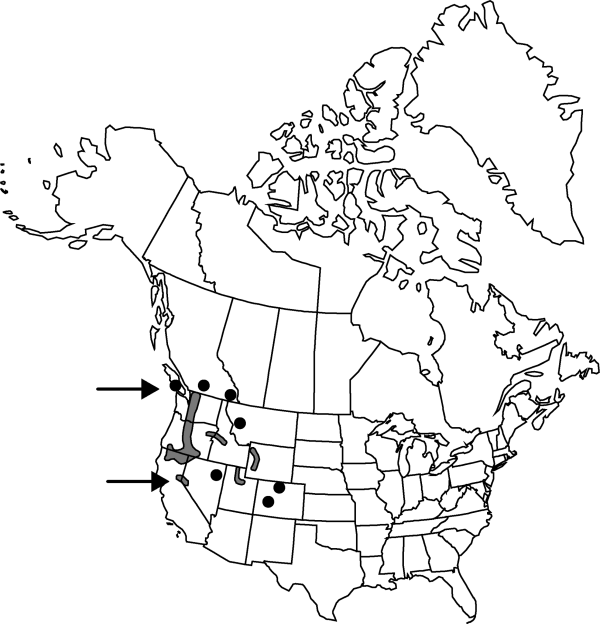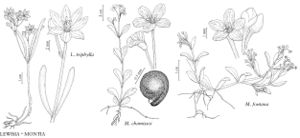Lewisia triphylla
in A. Gray et al., Syn. Fl. N. Amer. 1: 269. 1897.
Taproots cormlike, globose. Stems lax to erect, 3–11 cm. Leaves: basal leaves withering before anthesis, ± sessile, blade narrowly linear to filiform, subcylindric, 1–6 cm, margins entire, apex obtuse to subacute; cauline leaves 2–3 (–5), paired or whorled, blade similar to basal leaves, 10–50 mm. Inflorescences usually subumbellate to paniculate cymes, (1–) 3–25-flowered; bracts 2 per flower, ovate to lanceolate, 1–5 mm, margins entire, apex obtuse to subacute. Flowers pedicellate, not disarticulate in fruit; sepals 2, ovate, 2–4 mm, herbaceous, margins entire, apex rounded to obtuse; petals 5–9, white or pinkish with darker veins, elliptic-obovate to elliptic-ovate, 4–7 mm; stamens (3–) 4 (–5); stigmas 3–5; pedicel 5–15 (–25) mm. Capsules 3–4 mm. Seeds 8–25, 1 mm, shiny, shallowly tuberculate.
Phenology: Flowering late spring–summer.
Habitat: Open places, sandy to gravelly soils, sometimes alpine meadows, usually near melting snow
Elevation: 1500-3300 m
Distribution

B.C., Calif., Colo., Idaho, Mont., Nev., Oreg., Utah, Wash., Wyo.
Discussion
Selected References
None.
Lower Taxa
"broad" is not a number.
